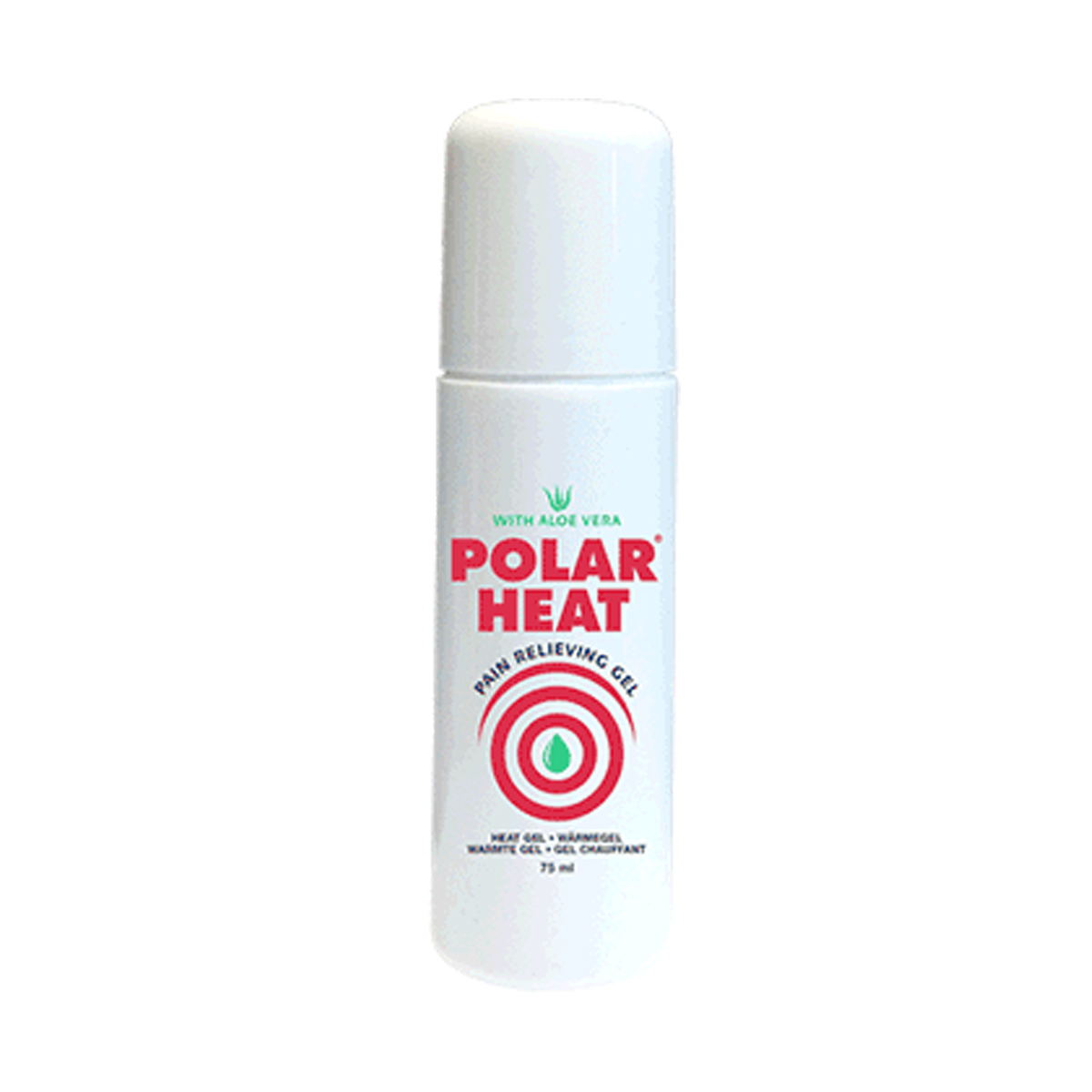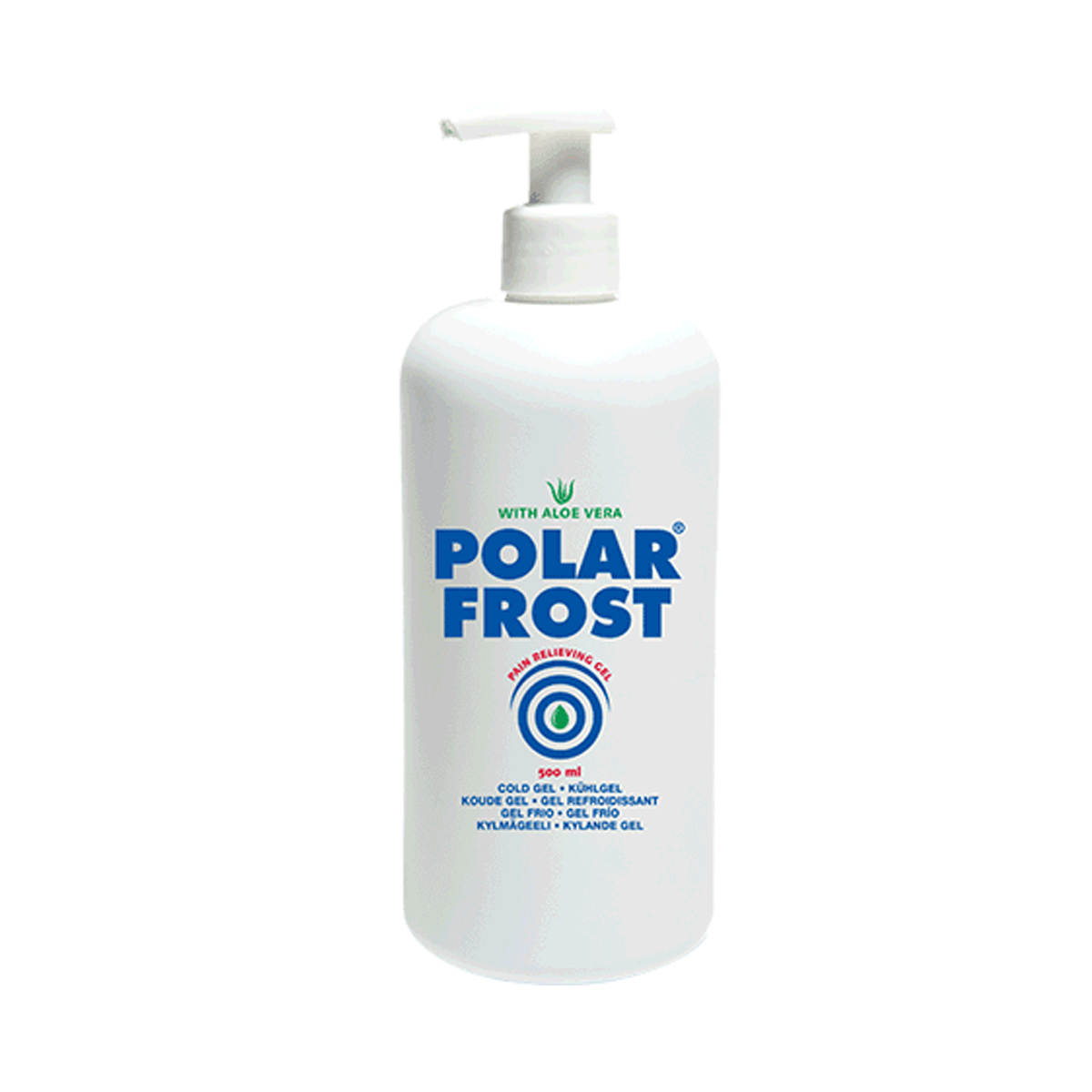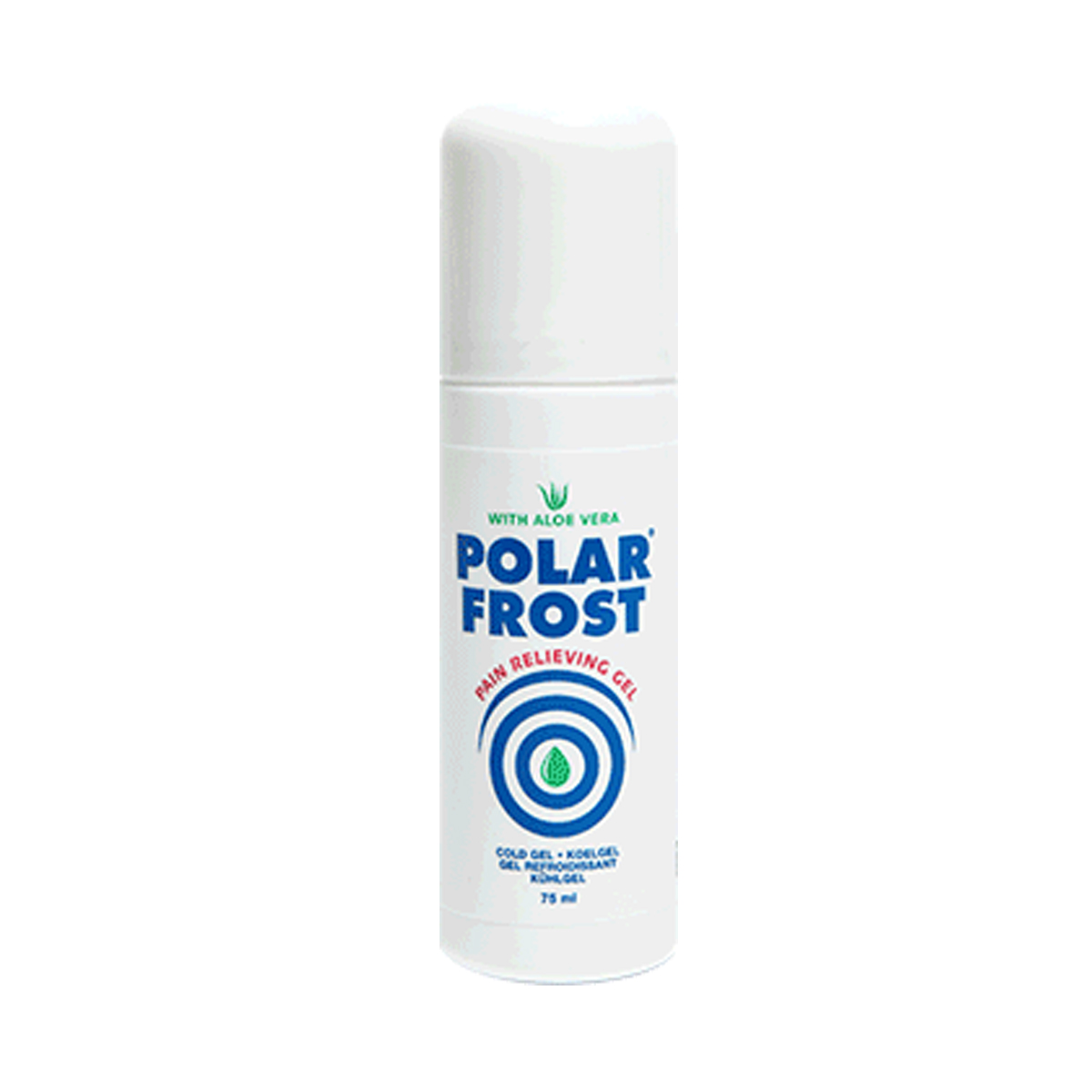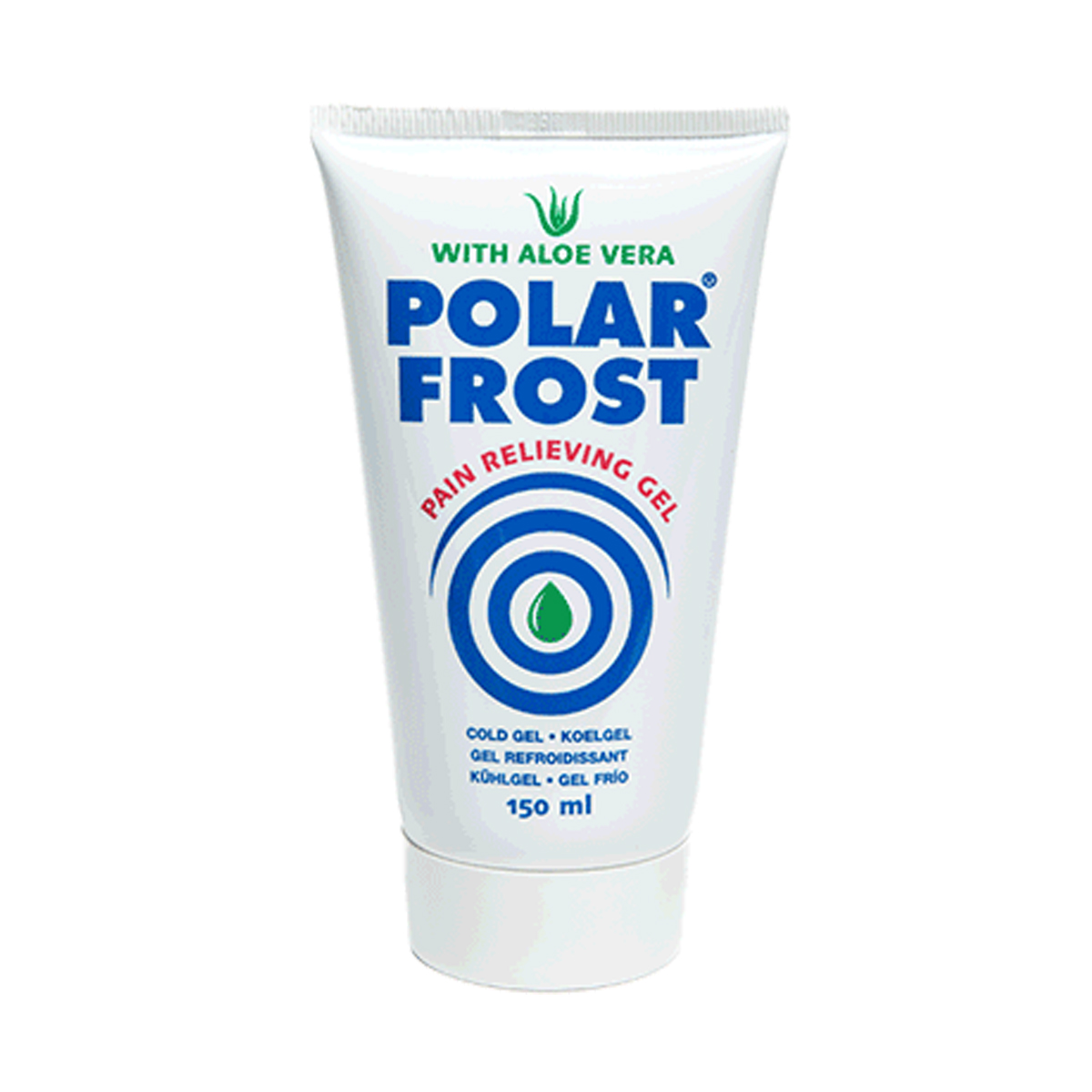Frohnradstraße 2
63768 Hösbach
Tel.+49 (0) 6021 62998-100
Fax +49 (0) 6021 62998-99
Pain gel
Learn more about the effect and application of pain gels here..
Filter products

The application stimulates the blood circulation and makes the muscles warm and relaxed. It relieves muscle tension. By increasing blood circulation, the risk of muscle strain is reduced. The effect is based on substances such as camphor and capsaicin. The increased capillary blood flow brings more oxygen to tissues and cells and thus contributes to the healing process. The heat gel is intended as an aid for disorders of peripheral blood circulation, various types of pain and non-inflammatory pain and tension. The warming gel is an excellent remedy for top athletes and sportsmen to prevent pulled muscles and torn muscle fibres and to increase performance. Fields of application The Polar Heat heat gel is ideal for the treatment of non-inflamed muscles and joint pain. It relieves muscle tension and stress. The Polar Heat heat gel causes an increased blood circulation at the applied skin area, which relaxes the muscle and immediately relieves the pulling pain. Product features Polar Heat Wärmegel contains new, effective ingredients such as Spanish pepper, camphor and aloe vera.

Polar Frost® is an analgesic, natural and aloe vera based cooling gel from Lapland. It is non-greasy, does not stain and consists of natural ingredients. Effect Polar Frost® gently reduces the skin temperature of the affected area by 5-6° Celsius for about 4 to 6 hours after application without causing hypothermia or frostbite. Fields of application Muscle tension and joint pain Swelling and inflammation Supportive use in painful and inflammatory diseases of the locomotor system (sciatica, back and neck pain) Polar® Frost is also ideal for refreshment and relaxation after physical exertion Product features Long lasting cooling (4 to 6 hours) With natural ingredients (cooling by menthol, care by aloe vera) Polar Frost® absorbs quickly, leaves no traces from the refrigeration specialists - made in Finland

Polar Frost® is an analgesic, natural and aloe vera based cooling gel from Lapland. It is non-greasy, does not stain and consists of natural ingredients. Effect Polar Frost® gently reduces the skin temperature of the affected area by 5-6° Celsius for about 4 to 6 hours after application without causing hypothermia or frostbite. Fields of application Muscle tension and joint pain Swelling and inflammation Supportive use in painful and inflammatory diseases of the locomotor system (sciatica, back and neck pain) Polar® Frost is also ideal for refreshment and relaxation after physical exertion Product features Long lasting cooling (4 to 6 hours) With natural ingredients (cooling by menthol, care by aloe vera) Polar Frost® absorbs quickly, leaves no traces from the refrigeration specialists - made in Finland

Polar Frost® is an analgesic, natural and aloe vera based cooling gel from Lapland. It is non-greasy, does not stain and consists of natural ingredients. Effect Polar Frost® gently reduces the skin temperature of the affected area by 5-6° Celsius for about 4 to 6 hours after application without causing hypothermia or frostbite. Fields of application Muscle tension and joint pain Swelling and inflammation Supportive use in painful and inflammatory diseases of the locomotor system (sciatica, back and neck pain) Polar® Frost is also ideal for refreshment and relaxation after physical exertion Product features Long lasting cooling (4 to 6 hours) With natural ingredients (cooling by menthol, care by aloe vera) Polar Frost® absorbs quickly, leaves no traces from the refrigeration specialists - made in Finland
For which areas of application are pain gels suitable?
Pain gels can be used for pain of different types: acute, occasional or recurrent. The most common use of pain gels is for joint pain and muscle pain or tension.
Other uses include:
- Strains
- Bruises
- Sprains
- Rheumatic diseases, such as muscle inflammation or tendonitis
- Degenerative diseases in the area of the spine
Pain gels can be applied to various parts of the body and can be effective for mild to moderate pain. More generally, pain gels can help reduce inflammation and swelling and promote pain relief.
How do pain gels work?
A pain gel works in a similar way to a pain pill. However, instead of distributing the active ingredient via the bloodstream in the body, the active ingredients penetrate directly into the affected area via the skin layers when a pain gel is used. This means that the pain gel can reach its target more quickly and take effect without first having to be transported to the pain location via the bloodstream.
Cooling or warming pain gel? These are the differences!
Depending on the pain you want to treat, different gels are recommended. A distinction is made between cooling and warming pain gels. Which of the two should be used depends on what kind of pain it is.
Polar Frost - The pain-relieving cooling gel
When your body is injured, the damaged tissue becomes inflamed. This can cause pain, swelling or redness. Swelling is a natural reaction to the injury, and redness indicates inflamed tissue. Treatment with cold slows the swelling and immediately relieves pain. Polar Frost® provides a moderate, long-lasting reduction in skin temperature (5-6°C) for 4-6 hours without the risk of backlash or frostbite. If you see a bruise under the injured skin area, you should also use a cooling gel. The gel will cause the blood vessels to contract and your bleeding will be minimized. The gel can also help relieve pain in chronic injuries.
In addition, Polar Frost is based on aloe vera. The aloe vera seals the cooling menthol, giving the gel an even longer-lasting cooling effect. Thanks to the medicinal plant, the pain gel can have an anti-inflammatory effect and keeps the skin smooth and moist during treatment.
Polar Frost can help with the following injuries and illnesses:
- muscle diseases and injuries such as strains, sprains and fractures
- chronic neck, shoulder and low back pain
- work-related muscle disorders cramps and spasms
- bruises
- sprains
- sciatica pain syndrome
- arthritis and related inflammation and pain
- osteoarthritis bursitis
- golfer's wrist
- tedonitis
- tennis elbow
Polar Heat – ideal for tension and strains
You can use the warming pain gel Polar Heat® in case of tension or strain. The active ingredients of the gel stimulate your blood circulation and thus ensure that your muscles relax. The effectiveness of the gel can last between 6 and 12 hours. Due to the increase in blood circulation, the risk of muscle strains is lower. Increased capillary blood flow brings more oxygen to tissues and cells, contributing to the healing process. This makes it ideal for treating dragging pain and chronic injuries, as well as joint pain.
For athletes and elite athletes, Polar Heat® is an excellent tool for preventing strains and muscle fiber tears and enhancing performance. For swelling and inflamed areas, a cooling gel should be used rather than a heat gel.
How is pain gel applied correctly?
After you have located the area to be treated, apply a thin layer to the affected area. Reapply the cooling gel every three hours for 3-5 days.
The warming gel should be applied twice a day for 2-5 days. Test the product on a small area of the skin before the first application, as there may be varying levels of heat depending on your skin type.
It is important that you do not cover the areas you are treating with the gel. It is best to leave the gel on and then put on your clothes. In general, pain gel should not be used on open wounds.
